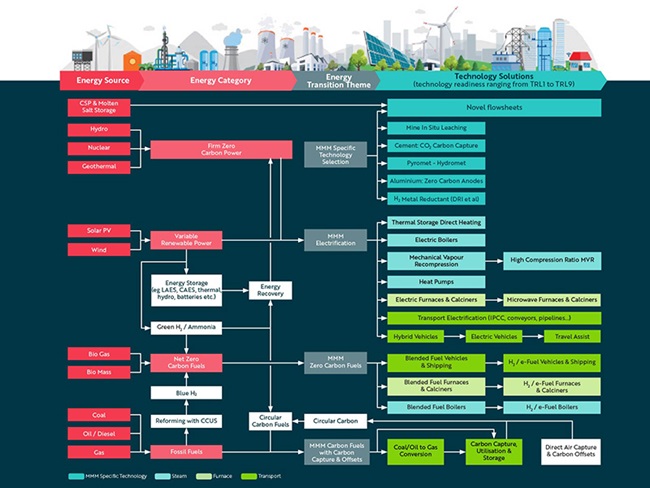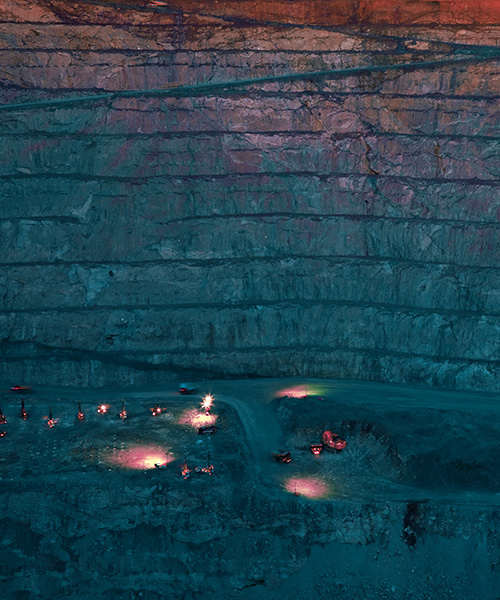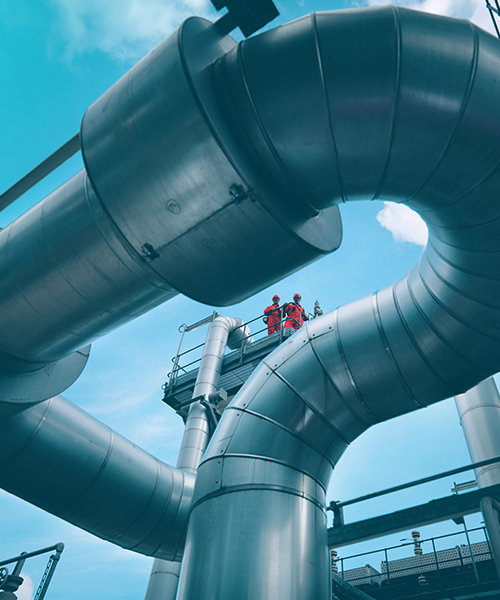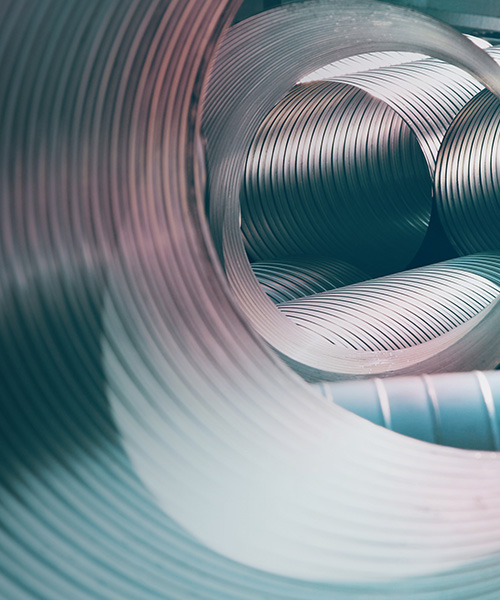September 21, 2021 • 4 min read
Sustainable mining: Finding the right decarbonization solutions
How can miners make the right investment decisions for their future, considering emerging technologies and shifting economics?
Over the next 30 years, miners have key sustainability milestones to meet on the journey to net zero. The decisions they make over the next few years – to meet these interim goals – will greatly impact their future trajectory.
“Imagine investing in coal to gas conversion to meet 2030 carbon reduction goals only to see competitors gain an edge through electrification using low cost renewables, while others use carbon capture, use and storage (CCUS) that becomes less price competitive over time,” says Jock Armstrong, Principal Consultant, Bauxite and Alumina Center of Excellence.
“Or imagine that local electricity cost and poor reliability ultimately cause failure for a business that’s already invested heavily in electrification. Both scenarios are possible.
“To reduce the risk of uncertainty, miners need to think decades ahead – while periodically reviewing market and technical analyses – to stay on the correct course.”
Understanding the need for decarbonization strategies
Decarbonization will be the dominant megatrend in mining for the next 20 to 30 years. It will require significant investment in capital and people to meet targets.
“First, we need to understand the transformation and decarbonization strategies needed for each asset,” explains Armstrong. “For example, its proximity to energy sources, other local industry, communities and existing infrastructure.
“In some cases, retrofitting existing assets with carbon capture may be the most economical solution. But in others, the best solution may be electrification or conversion to low carbon fuels.”
Create a roadmap to net zero
Miners will need to identify the steps they need to take to reduce their carbon footprint.
“Planning needs to consider factors like what the price of different energy sources will be in 10 or 20 years, and what role will hydrogen play,” says Armstrong. “This means looking at how long it will take to develop and adopt emerging technologies. And to consider if the mine of the future will be based on in-pit processing, as well as the capital cost of decarbonization options.
“While there is value in energy efficiency improvements, efficiency alone will not get us to net zero. We'll also need to think about emerging technologies and evolving economics, tht will transform the mining industry.”
Bringing together skills and capabilities from multiple sectors
The mining industry needs the right people with a broad mix of skill sets, to make these decarbonization projects possible.
“We need people who understand new energy, energy storage and distributed energy systems,” says Armstrong. “And people who can analyze future energy pricing and the evolution of energy transition technologies. This is not the world of mining as we've known it before. This is the world of new energy and power.
“The mining industry needs to combine these skills and capabilities to identify the opportunities, synergies and solutions across the energy transition and mining.”
Finding economic solutions to retrofit existing assets
Additional capacity of minerals and metals like aluminium and alumina will be required to meet the growing demand for things like electric vehicles and solar panels.
“Designing greenfield refineries for a decarbonized world may be a better solution than applying current fossil fuel-based designs and then incurring decarbonization retrofit costs,” explains Armstrong.
“But it's not possible to avoid these costs. Every producer faces the same decarbonization challenges, government legislation and social scrutiny. A competitive edge will come from finding the most economic solutions to these challenges to position future assets low on the cost curve.”
Helping miners navigate net zero
Decarbonizing mining is essential to achieving the world’s net zero targets. But with constantly changing technology and industry trends, what steps will miners need to take?
“Our customers’ project pipelines are already aligning with their decarbonization commitments, as they turn their focus to the energy transition,” says Armstrong.
“We have experts in mining, mineral processing and metals, and oil and gas, we also have experts in CCUS, concentrated solar power, onshore and offshore wind, solar photovoltaics, distributed energy systems and energy storage. The key to turning this expertise into real solutions is collaboration across industries.
“It’s a complex task to transform the energy supply of existing assets and re-imagine future mine designs in a matter of decades,” continues Armstrong. “But if miners, energy producers, governments and communities can work together, we have the combined expertise to create truly sustainable mines.”





